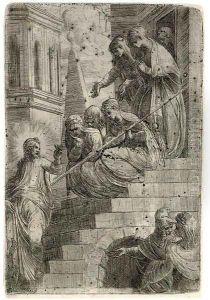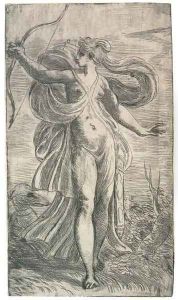Andrea Meldolla Paintings
Andrea Meldolla, also known as Andrea Schiavone or il Schiavone, was an Italian Renaissance painter and etcher, famous for his innovative and distinctive Mannerist style. Born in the town of Zara (now Zadar, Croatia), which was then part of the Republic of Venice, between 1510 and 1515, Meldolla's nickname 'Schiavone' indicates his Dalmatian heritage, as the term means 'Slavonian' or 'from Dalmatia'.
Meldolla trained in Venice and was influenced by the works of Parmigianino, as well as the Venetian masters such as Titian and Tintoretto. His approach to painting was characterized by a free and energetic application of paint, with dynamic compositions and elongated figures, typical of the Mannerist style that emerged as a reaction to the harmonious and idealized forms of the High Renaissance.
Throughout his career, Schiavone worked on a variety of projects including altarpieces, mythological and allegorical scenes, and frescoes. He was also a talented etcher, and his prints were instrumental in spreading his influence to a wider audience. His work is noted for its expressive brushwork and an almost impressionistic handling of paint, anticipating some of the techniques that would become prominent in the Baroque period.
Schiavone's contributions to the Venetian art scene were significant, and he played a role in the transition from the Renaissance to Mannerist aesthetics in Venice. His work was appreciated by his contemporaries, but his unconventional style also received criticism for its perceived lack of discipline. Nevertheless, Andrea Meldolla's influence can be seen in the later works of Venetian painters, and his etchings contributed to the development of the printmaking tradition in Venice.
Andrea Meldolla died in Venice in 1563, leaving behind a body of work that, while not as widely recognized as some of his contemporaries', has been reassessed by art historians for its originality and contribution to the evolution of Venetian art. Today, his paintings and prints can be found in various museums and collections around the world, offering insight into the eclectic and dynamic world of 16th-century Venetian art.

